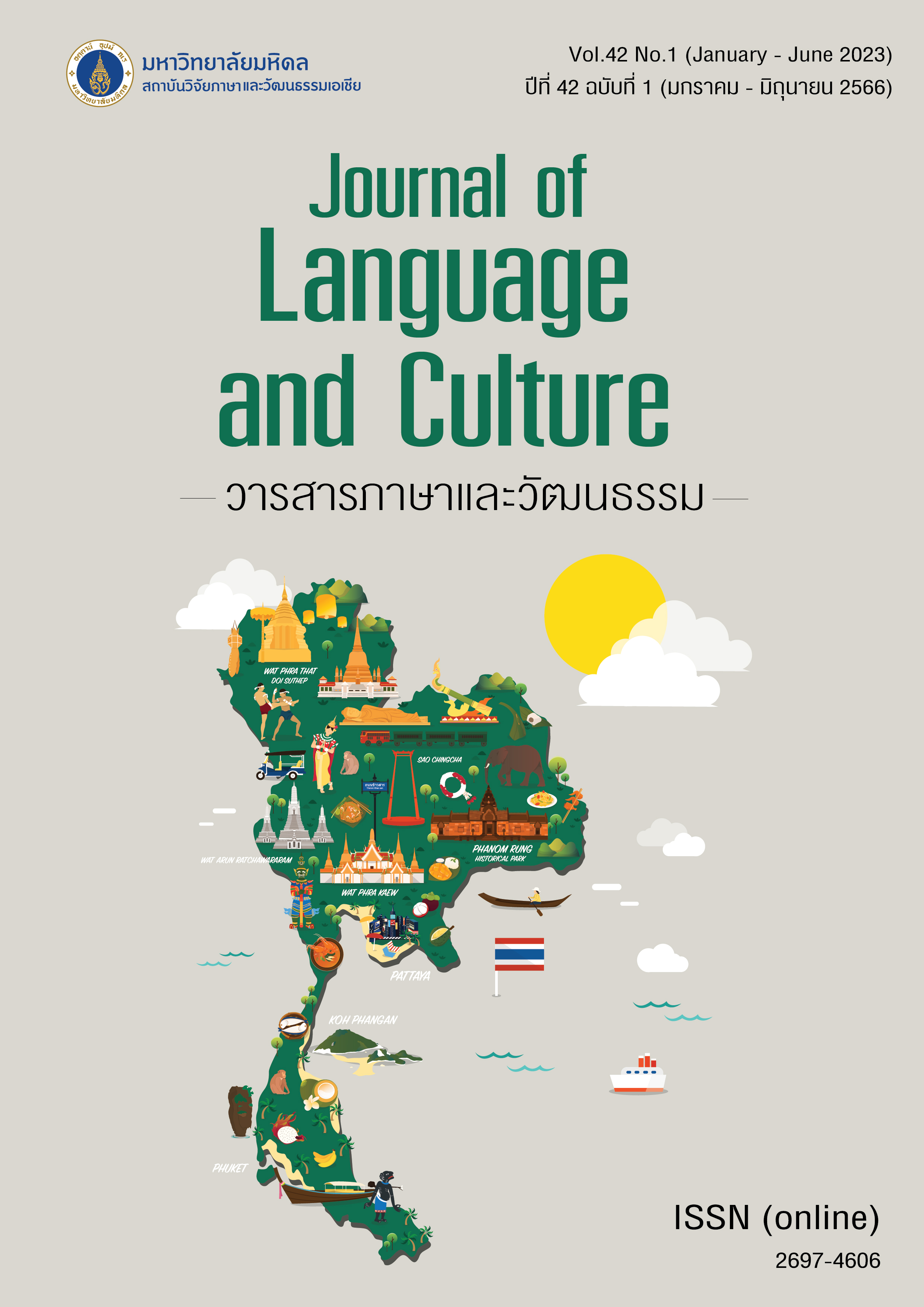Literary techniques used for representing Asia based on orientalism in American popular media in the 21st century
Main Article Content
Abstract
The objectives of this descriptive study were to examine the literary techniques used to represent Asia including its people, places, and cultures based on the concept of Orientalism in American popular media in the 21st century, namely films, television programs, advertising, and comic books and to find out the most frequently-used techniques and possible reasons behind them. Besides, this study aimed at discussing the factors which influence such Orientalist representations. This study is based on Said’s Orientalism as the theoretical framework in the analysis of the American popular media. To clarify, Orientalism refers to the construction of the East (Asia) based upon the binary opposition made between the superior West and the inferior East. The results of this study revealed that the portrayals of Asia in the selected American popular media relied on the binary opposition which depicted Asia in association with exoticism, mystery, irrationality, and threat. Further, the literary techniques that were mostly used in the American media included repetition and symbolism which were mostly found in the American films and television programs. The possible reasons for employing such literary techniques were that both of the techniques might probably be simple and appealing to audiences to interpret. Moreover, the Orientalist ideology and the white supremacy rooted in the very foundation of the Occidental construction of the Orient were the factors which influence the negative representations of Asia and could possibly open the door for the Occidental imperialism in the modern era.
Article Details
The articles featured in the Journal of Language and Culture (JLC) constitute academic works representing the viewpoints of the respective author(s). It is crucial to note that these opinions do not necessarily reflect those of the Editorial Board.
All articles published in JLC are released under the Creative Commons Attribution 4.0 International License (CC BY 4.0). This license grants permission for unrestricted use, distribution, and reproduction in any medium, provided proper credit is given to the original author(s) and the source.

